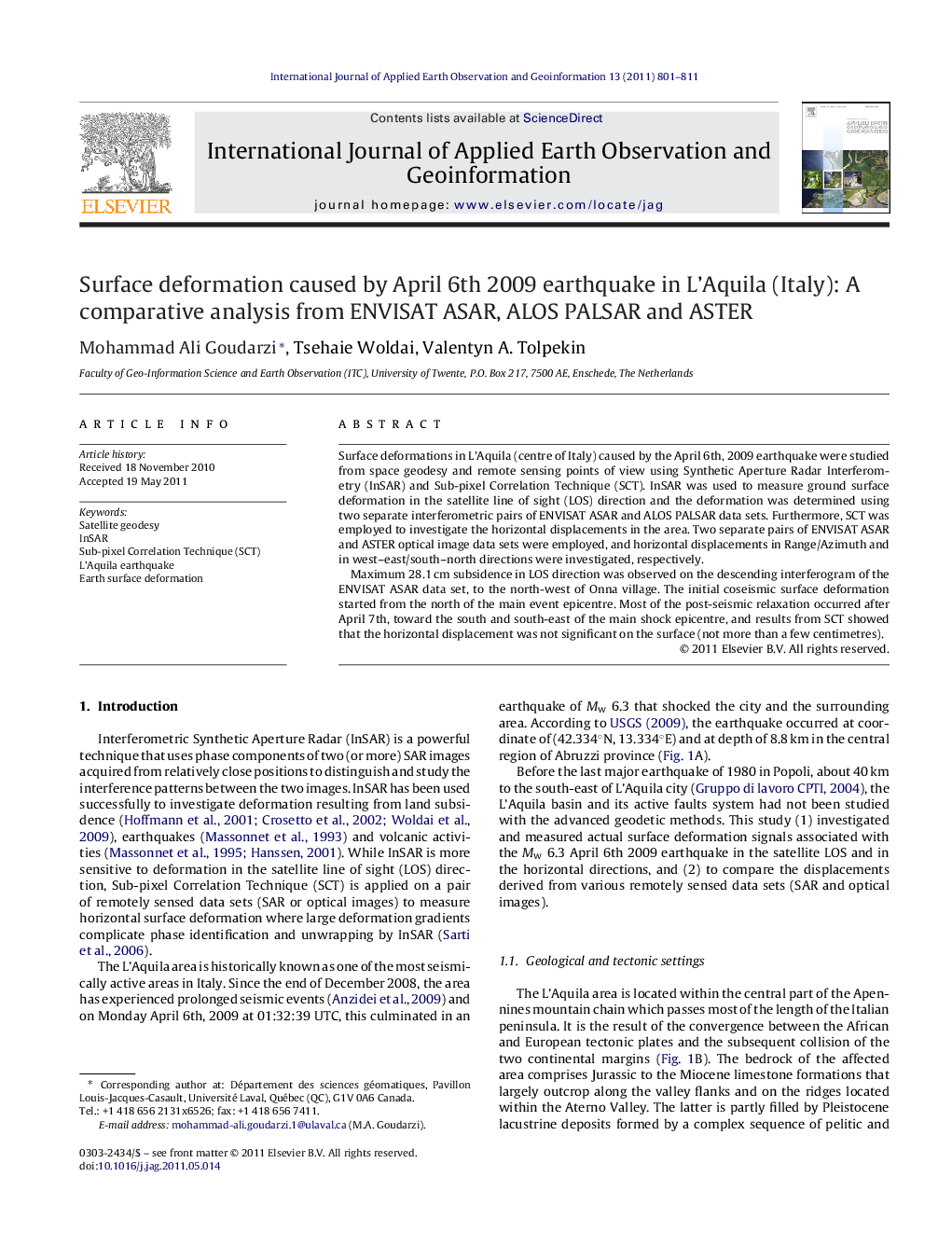| Article ID | Journal | Published Year | Pages | File Type |
|---|---|---|---|---|
| 4465091 | International Journal of Applied Earth Observation and Geoinformation | 2011 | 11 Pages |
Surface deformations in L’Aquila (centre of Italy) caused by the April 6th, 2009 earthquake were studied from space geodesy and remote sensing points of view using Synthetic Aperture Radar Interferometry (InSAR) and Sub-pixel Correlation Technique (SCT). InSAR was used to measure ground surface deformation in the satellite line of sight (LOS) direction and the deformation was determined using two separate interferometric pairs of ENVISAT ASAR and ALOS PALSAR data sets. Furthermore, SCT was employed to investigate the horizontal displacements in the area. Two separate pairs of ENVISAT ASAR and ASTER optical image data sets were employed, and horizontal displacements in Range/Azimuth and in west–east/south–north directions were investigated, respectively.Maximum 28.1 cm subsidence in LOS direction was observed on the descending interferogram of the ENVISAT ASAR data set, to the north-west of Onna village. The initial coseismic surface deformation started from the north of the main event epicentre. Most of the post-seismic relaxation occurred after April 7th, toward the south and south-east of the main shock epicentre, and results from SCT showed that the horizontal displacement was not significant on the surface (not more than a few centimetres).
► The deformation to have originated from north of the epicentre that gradually extended to the south and south-east mostly after April 7th. ► Maximum 28.1 cm subsidence in LOS direction was measured to the north-west of Onna village. ► The horizontal displacement was not significant on the surface. ► The causative fault would have dislocated a portion of the crust without rupturing the ground surface. ► The earthquake and the fault system have had a gravitational shaking mechanism.
